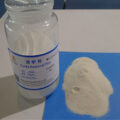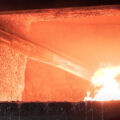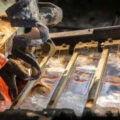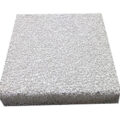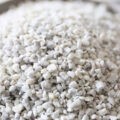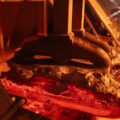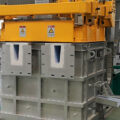The pioneer of melt purification technology is also the source of your metal filtration system. The influence of impurity elements is great for metal cleanliness. In order to obtain the best metal cleanliness, AdTech can provide systems, filters, operating methods, metallurgical services, and support. The ability of the CFF filtering system to capture these inclusions is essential to keep the ingot clean during metal solidification. Therefore, the quality and productivity of downstream operations (such as forging, extrusion and rolling) are guaranteed.
Influence of Impurity Elements
Vanadium forms VAl11 refractory compounds in aluminum alloys, which play a role in refining grains during the casting process, but it has a smaller effect than titanium and zirconium. Vanadium also has the effect of refining the recrystallization structure and increasing the recrystallization temperature.
Calcium has very low solid solubility in aluminum alloys and forms CaAl4 compounds with aluminum. Calcium is also a superplastic element of aluminum alloys. About 5% calcium and 5% manganese alloys have superplasticity. Calcium and silicon form CaSi and are insoluble in aluminum. Due to the reduction of the solid solution of silicon, the conductivity of industrial pure aluminum can be slightly improved. Calcium can improve the cutting performance of aluminum alloys. CaSi2 cannot strengthen the aluminum alloy by heat treatment. Trace amounts of calcium are beneficial for removing hydrogen from the aluminum liquid.
The elements of lead, tin and bismuth are low-melting metals. Their solid solubility in aluminum is not large, which slightly reduces the strength of the alloy, but can improve the cutting performance. Bismuth expands during the solidification process, which is beneficial for shrinkage. The addition of bismuth to the high-magnesium alloy prevents sodium embrittlement.
Antimony is mainly used as a modifier in cast aluminum alloys, and deformed aluminum alloys are rarely used. Only in the Al-Mg deformed aluminum alloy to replace bismuth to prevent sodium embrittlement. Antimony is added to some Al-Zn-Mg-Cu series alloys to improve the performance of hot and cold pressing.

Beryllium can improve the structure of the oxide film in the deformed aluminum alloy and reduce the burning loss and inclusion during the casting. Beryllium is a toxic element that can cause allergic poisoning. Therefore, aluminum alloys that come into contact with food and beverages must not contain beryllium. The content of beryllium in welding materials is usually controlled below 8μg/ml. The aluminum alloy used as the welding base should also control the content of beryllium.
Sodium is almost insoluble in aluminum, the maximum solid solubility is less than 0.0025%, and the melting point of sodium is low (97.8℃). When sodium is present in the alloy, it is adsorbed on the dendrite surface or grain boundary during solidification. During hot working, the sodium on the grain boundary forms a liquid adsorption layer. When brittle cracking occurs, NaAlSi compounds are formed without free sodium, and “sodium brittleness” is not generated. When the magnesium content exceeds 2%, magnesium seizes silicon and precipitates free sodium, resulting in “sodium brittleness”. Therefore, high-magnesium aluminum alloys are not allowed to use sodium salt flux. The method to prevent “sodium embrittlement” is the chlorination method, so that sodium forms NaCl and is discharged into the slag, and bismuth is added to generate Na2Bi into the metal matrix. Adding antimony to produce Na3Sb or adding rare earth can also play the same role.



